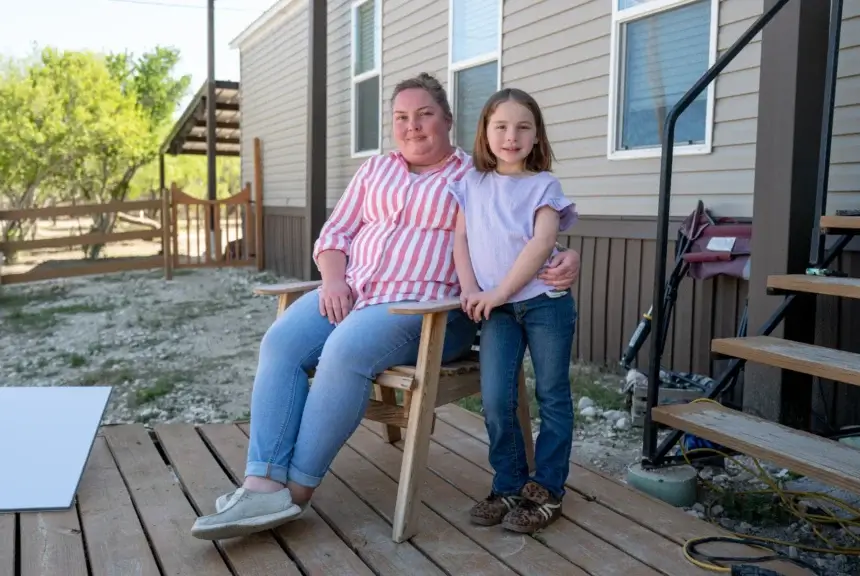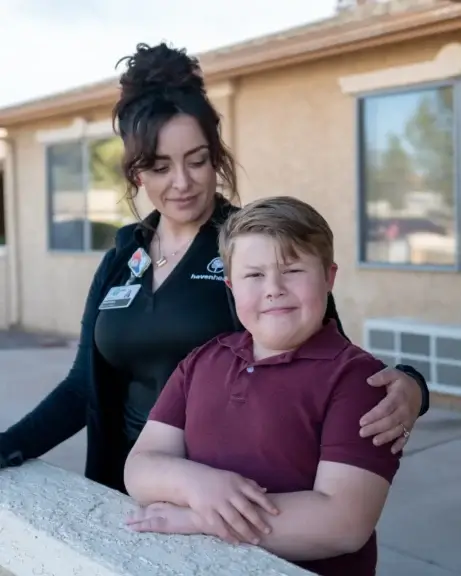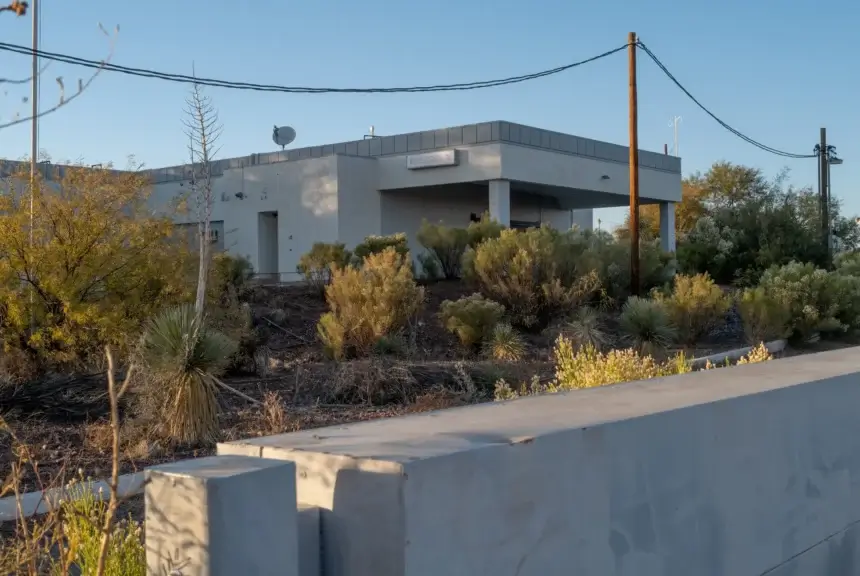Within hours of taking office, President Donald Trump declared an emergency on the U.S.-Mexico border, giving him authority to unilaterally spend billions on immigration enforcement and wall construction. He has since reportedly urged Congress to authorize an additional $175 billion for border security, far exceeding what was spent during his first term.
In the coming months, border towns in Texas and Arizona will receive more grants to fund and equip police patrols. New wall construction projects will fill border communities with workers who eat at restaurants, shop in stores and rent space in RV parks. And National Guard deployments will add to local economies.
But if the president asked Sandra Fuentes what the biggest need in her community on the Texas-Mexico border is, the answer would be safe drinking water, not more border security. And if Trump put the same question to Jose Grijalva, the Arizona mayor would say a hospital for his border city, which has struggled without one for a decade.
Although billions of state and federal dollars flow into the majority-Latino communities along the nearly 2,000-mile U.S.-Mexico border, many remain among the poorest places in the nation. In many towns, unemployment is significantly higher and income much lower than their interior counterparts, with limited access to health care, underfunded infrastructure and lagging educational attainment. Security walls are erected next to neighborhoods without running water, and National Guard units deploy to towns without paved roads and hospitals.
By some estimates, about 30,000 border residents in Texas lack access to reliable drinking water, among more than a million statewide. For 205,000 people living along Arizona’s border with Mexico, the nearest full-service hospital is hours away.
Such struggles aren’t confined to the border. But the region offers perhaps the most striking disparity between the size of federal and state governments’ investment there and how little it’s reflected in the quality of life of residents.
“The border security issue takes up all the oxygen and a lot of the resources in the room,” said state Rep. Mary González, a Democrat from El Paso County who has sponsored bills to address water needs. “It leaves very little space for all the other priorities, specifically water and wastewater infrastructure, because most people don’t understand what it’s like turning your faucet and there’ll be no water.”
Here’s how residents in two border towns, Del Rio, Texas, and Douglas, Arizona, experience living in places where the government always seems ready to spend on border security while stubborn obstacles to their communities’ well-being remain.

When Cierra Flores gives her daughter a bath at their home in Del Rio, she has to keep a close eye on the water level of the outdoor tank that supplies her house. Like any 6-year-old, her daughter likes to play in the running water. But Flores doesn’t have the luxury of leaving the tap open. When the tank runs dry, the household is out of water. That means not washing dishes, doing laundry or flushing the toilet until the trip can be made to get more water.
Flores lives on a ranch in Escondido Estates, a neighborhood where many residents have gone decades without running water. Flores’ family has a well on their property. But during the summer and prolonged droughts, as the region is now experiencing, their well runs dry.
At those times, the family relies on a neighbor who has a more dependable well and is willing to sell water. Flores’ husband makes hourlong trips twice on weekends to fill the family’s water tank. Their situation has felt even more tenuous lately, as her neighbor’s property was listed for sale, prompting worries about whether they’ll continue to have access to his well.
“I have no idea where we would go here if that well wasn’t there,” Flores said. “It’s frustrating that we don’t have basic resources, especially in a place where they know when the summer comes it doesn’t rain. It doesn’t rain, we don’t have water.”
Val Verde County, where Del Rio is located, is three times the size of Rhode Island and hours from a major city. About a fifth of its nearly 50,000 residents live in poverty, a rate nearly twice the national average. Some live in colonias — rural communities along the U.S.-Mexico border, including illegal subdivisions that lack access to water, sewers or adequate housing.
The county has worked for years to bring water to residents, piecing together state and federal grants. Yet about 2,000 people — more than 4% of the county’s population — still lack running water, according to a database kept by the Texas Office of the Attorney General. For those residents, it means showering at fitness centers and doing the dishes once a week with water from plastic jugs.

In the early 1990s, then-Gov. Ann Richards, a Democrat, toured some of the state’s colonias along the border to assess the living conditions. After stepping into the mud on an unpaved street, she’s said to have been so moved by the scene that she told a staffer, “Whatever they want, give it to them.”
Fuentes, a community organizer, likes to tell that story because it drives home how long residents have fought for water and other improvements but been stymied by state and local politics and limited funds.
“It’s going to be an uphill battle, but we are going to keep on battling,” she said. “What else is there to do?”
Over the past 30 years, the state has provided more than $1 billion in grants and loans to bring drinking water and wastewater treatment to colonias and other economically distressed areas. Texas 2036, a nonpartisan public policy think tank, estimates Texas needs nearly $154 billion by 2050 to meet water demands across the state amid population growth, the ongoing drought and aging infrastructure.
Texas state leaders said they are committed to investing in water projects and infrastructure. Gov. Greg Abbott’s office said he is calling on the Legislature to dedicate $1 billion a year for 10 years and is looking forward to working with lawmakers “to ensure Texans have a safe, reliable water supply for the next 50 years.”
Kim Carmichael, a spokesperson for Texas House Speaker Dustin Burrows, a Republican from Lubbock, said, “Texas is at a critical juncture with its water supply, and every lawmaker recognizes the need to act decisively and meaningfully invest to further secure our water future.” The Texas House’s base budget proposes $2.5 billion for water infrastructure.
One of the challenges — at the federal and state level — is that infrastructure needs often exceed available funds, said Olga Morales-Pate, chief executive officer of Rural Community Assistance Partnership, a national network of nonprofits that works with rural communities on access to safe drinking water and wastewater issues. “So it becomes a competitive process: Who gets there faster, who has a better application, who is shovel ready to get those funding opportunities out?” she said.

The plight of people without water often gets overlooked, said Karen Gonzalez, an organizer who used to work with Fuentes. Even though she grew up in Del Rio, it wasn’t until she started to work with the community that she learned some county residents didn’t have water.
“Every person that I come across that I tell that we’re working this issue is like, ‘There’s people that don’t have water?’” she said. “It’s not something that is known.”
Unlike border security, which is constantly in the spotlight.
During his inauguration, Trump praised Abbott as a “leader of the pack” on border security. In 2021, Abbott launched Operation Lone Star, a multibillion-dollar effort aimed at curbing illegal immigration and drug trafficking. As part of the operation, the state has awarded Val Verde County and the city of Del Rio more than $10 million in grants, state data obtained by The Texas Tribune shows.
A state-funded border wall that has gone up in the county a short distance from the Rio Grande stretches in fits and starts, including next to a neighborhood without running water. As of November, about 5 miles of it had cost at least $162 million, according to the Tribune. The state Legislature’s proposed budget includes $6.5 billion to maintain “current border security operations.”
Meanwhile, organizers, elected officials and residents say state and federal programs to fund water infrastructure will continue to fall short of the need. Last year, the state fund created by lawmakers in 1989 to help underserved areas access drinking water had $200 million in applications for assistance and only $100 million in available funding.
When grants are awarded, water projects can take years to complete because of increasing costs and unforeseen construction difficulties — like hitting unexpected bedrock while laying pipe, said Val Verde County Judge Lewis Owens. Project delays — some of them, Owens acknowledged, the county’s fault — impede the ability to get future grants.
Organizers like Fuentes and Karen Gonzalez said their frustration with the slow progress on water has grown as they’ve watched the border wall go up and billions more dollars spent to deploy state troopers and the National Guard to aid federal border security officers.
“It’s just infuriating,” Karen Gonzalez said. She said she hopes elected officials “focus on what our actual border community needs are. And for us, I feel like it’s not border security.”
As paramedics loaded her 8-year-old son into a helicopter in the Arizona border town of Douglas, Nina Nelson did her best to reassure him. Days earlier, Jacob and his father had been riding ATVs on their ranch in far southeastern Arizona, along the U.S.-Mexico border. Dust irritated Jacob’s lungs, and over the next few days his breathing deteriorated until Nelson could see him fight for every breath.
He needed care that isn’t available in Douglas, a town of about 15,000. And he would have to make the trip without her.
“Buddy, you’re gonna be OK,” she recalled telling him. She knew it would take more than twice as long to drive the 120 miles to Tucson and the nearest hospital that could provide the care he needed. “I’m gonna be racing up there. I’ll be there. I’m gonna find you,” she said.
Douglas lost its hospital nearly a decade ago. Southeast Arizona Medical Center had struggled financially for years and by 2015 was staffed by out-of-state doctors. When it ran afoul of federal rules too many times, jeopardizing patient safety, the government pulled its ability to bill Medicare and Medicaid and it closed within a week.
As her son’s breathing took a turn for the worse, Nelson considered the variables everyone in Douglas confronts in a medical emergency. Should she go to the town’s stand-alone emergency room, which treats only the most basic maladies? Drive the half hour to Bisbee or an hour to Sierra Vista for slightly higher levels of care? Or could Jacob endure the two hours it takes to drive to Tucson?
“That is the kind of game you play: ‘How much time do I think I have?’” Nelson said.

Arizona hasn’t been as aggressive as Texas in funding border security. But when concerns about the border surge, money often follows.
In 2021, the state created the Border Security Fund and allocated $55 million to it. A year later, then-Gov. Doug Ducey asked state lawmakers for $50 million for border security. They gave him more than 10 times that amount, including $335 million for a border wall. The measure was proposed by Sen. David Gowan, a Republican who represents Douglas. In October 2022, crews began stacking shipping containers along the border in Cochise County, where Douglas is located. Gowan’s spokesperson said he wasn’t available for comment.
The container wall wasn’t effective. Migrants slipped through gaps between containers, and a section toppled over. When the federal government sued, claiming the construction was trespassing on federal land, Ducey had the container wall removed.
The cost of erecting, then disassembling the wall: $197 million. (The state recouped about $1.4 million by selling the containers.)
Daniel Scarpinato, Ducey’s former chief of staff, said border security is a significant issue for nearby communities and requires resources, “especially given the failures of the federal government.” He noted that the Ducey administration didn’t ignore other needs in the area, including spending to attract doctors to rural Arizona. “But we will make no apologies for prioritizing public safety and security at our border,” he said.

Grijalva, a Douglas native, was sworn in as mayor in December with a list of needs he is determined to make progress on: a community center, more food assistance for the growing number of hungry residents and a hospital. Money the state spent on the container wall would’ve been better used on those projects, he said. “I appreciate Doug Ducey trying that, but those resources could have gone into the community,” he said.
The median income in Douglas is $39,000, about half the state’s median income, and almost a third of the town’s residents live in poverty. A shrinking tax base makes it difficult for Douglas to provide basic services. The town doesn’t have enough money for street repairs, let alone to reopen a hospital. The backlog of repaving projects has climbed to $67 million, while Douglas nets only $400,000 a year for street improvements.
Money for wall construction or National Guard units gives a short-term boost to the economy, but those efforts can also interfere with the economic lifeblood of towns like Douglas: cross-border traffic.
Both Trump and Arizona Gov. Katie Hobbs, a Democrat, have deployed hundreds of guard members and active military personnel to the border. None have shown up in Douglas yet, Grijalva said. When they do, they’ll spend money. But a couple dozen troops don’t compare to the 3.6 million people who cross the border each year. The Walmart in Douglas, a stone’s throw from the port of entry, is packed daily with shoppers from Agua Prieta, Sonora, Grijalva said. More troops on both sides of the port bottleneck traffic and raise people’s fears of being detained, which may discourage them from crossing, even when they are doing so legally, he said.
Shortly after Trump’s inauguration, Grijalva declared a state of emergency, which could make the city eligible for federal aid if its economy takes a hit. “I know the executive orders didn’t do anything to stop the legal immigration, but it’s the perception,” Grijalva said. “If our economy dips in any way, they could give us some funding.”

Attracting a new hospital is a longer-term effort. Construction alone could cost upwards of $75 million. But then it would have to be staffed. In its final years, the hospital in Douglas suffered from the shortage of health care professionals plaguing much of rural America. The year it closed, it had no onsite physicians, said Dr. Dan Derksen, director of the Arizona Center for Rural Health. The state has programs to address that problem, including helping doctors in rural areas repay school loans. But the shortage has persisted. If a hospital were to open again in Douglas, it could cost as much as $775,000 to launch a residency program there, according to Derksen and Dr. Conrad Clemens, who heads graduate medical education for the University of Arizona.
“There’s policy strategies that you can do at the state level that help, but there’s no single strategy that is a cure-all,” Derksen said. “You have to do a variety of strategies.”
Border security funding, on the other hand, is easier to get.
Cochise County Sheriff Mark Dannels is known for his aggressive border enforcement activities. His office soaks up state and federal grants to help with drug interdiction, human trafficking and surveillance equipment on the border. The state also awarded him $20 million for a new jail and $5 million to open a border security operations center, a base for various agencies enforcing the border, in Sierra Vista, about an hour from Douglas.
At its grand opening in November, Dannels said all he had to do was ask for the money.
“I was speaking with Gov. Ducey and the governor asked me, ‘What do you guys need?’” Dannels said. “I said, ‘We need a collective center that drives actions.’” Shortly after, the plan came together, he said.
However, if Cochise Regional Hospital were still open, Dannels’ office would have one less security concern. The abandoned building, which is deteriorating in an isolated pocket of desert on the outskirts of Douglas, is a common waypoint for smugglers.
Lexi Churchill of ProPublica and The Texas Tribune and Dan Keemahill of The Texas Tribune contributed research
This article was originally published by ProPublica, and republished here under a Creative Commons license. Learn more about third-party content on ZanyProgressive.com.




